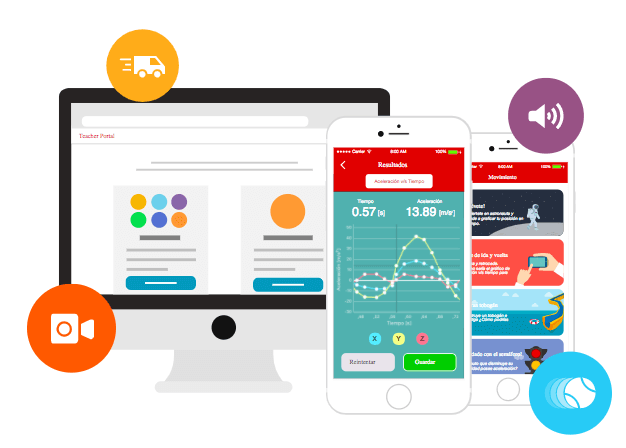Fly them to the moon!
Lab4Physics comes with predesigned experiments so that physics teachers can save time on their lesson planning for class experiment days.
One of these learning activities is called “Move!” and it allows students to learn about Uniform Linear Motion (ULM) by simulating the lunar landing and analyzing position vs. time graphs of their own movements.
Here is an overview of the experiment. Please download the Lab4Physics’ app If you want to learn more. Also, don’t forget to visit our Teachers’ Portal.
Skills developed in this experiment
- Communication
- Collaboration and teamwork
- Creativity
- Critical thinking
- Creating a hypothesis
- Ability to analyze data
- Analyzing and interpreting graphs
- Problem solving
How does it work?
Using a real life scenario — the first moon landing — students will get into groups of three to do a simulation Neil Armstrong’s walk across the surface of the moon.
- Before beginning the experiment, the teacher should create a guided or structured learning through inquiry activity that asks the students to respond to questions designed to develop their critical thinking.
- Then, the students can get ready to do the simulation. In the courtyard of the school, students should draw a 10 meter long path, using chalk to mark out 2 meter intervals along the path.
- Each student will have an assigned role in the group. One student will be in charge of taking measurements with the Lab4Physics Speedometer.
- Another student, the “astronaut,” should walk along the path they’ve created, from the initial position to the final position.
- The last student will be in charge of coordinating the walk, signalling to the first student each time the astronaut travels another 2 meters.
Speedometer
Indeed, The tool used for the measurements in this experiment is the Speedometer, which allows students to measure the time it takes for an object to travel from one position to the next. If you want to learn more about how the Speedometer works, you can read this article.
Using the speedometer, students will be able to look at the position vs. time graph and to analyze the “astronaut’s” movement immediately after they’ve finished the experiment.

Once they’ve finished with the experiment, students will have the knowledge and confidence they need to explain different concepts related to the physics of movement, such as the trend of the position vs. time graph.
If you want to know more details about this and other experiments. Visit our webpage or download Lab4Physics from the App Store or Google Play!
We have all the materials teachers need to easily implement physics experiments in their classrooms.
Visit our Teacher Portal for more information.
Finally if you’re interested in learning more about Lab4Physics, send us a message here
